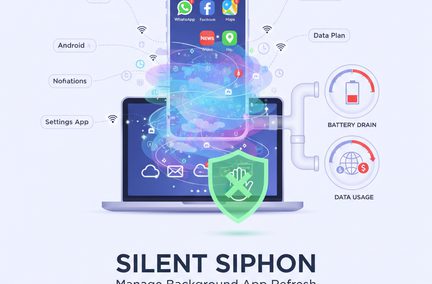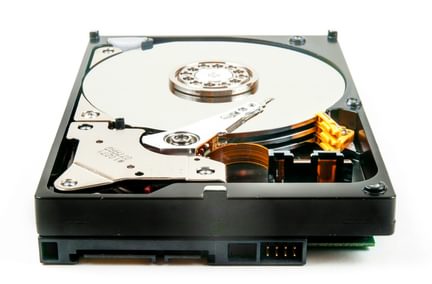6 Ways Fiber Internet is Revolutionizing Healthcare
Jan 23, 2024 | Helpful Tips, Technology News

In the fast-paced world of technology, high-speed fiber internet has emerged as a game-changer, transforming various sectors and industries. One huge impact area is healthcare. The marriage of high-speed fiber internet and telehealth services has introduced a new era in patient care, bringing unprecedented convenience, efficiency, and accessibility. And with high-speed fiber internet now reaching previously underserved areas, more patients and doctors can connect without the need to travel long distances or sit in a waiting room.
1. Closing the Distance with Telehealth and Virtual Visits
Technology to deliver healthcare services remotely (a.k.a. telehealth) has become increasingly popular in recent years. The desire to connect remotely has existed for years, but areas without good internet connections were left out. High-speed fiber internet is the backbone of this digital revolution, breaking down geographical barriers and ensuring that healthcare is accessible regardless of location.
With fiber-optic connections enabling rapid data transfer, patients can engage in virtual consultations with healthcare professionals from the comfort of their homes. This connection is especially crucial for individuals living in remote areas or those facing mobility challenges, as it often eliminates the need for time-consuming and often burdensome travel to healthcare facilities.
2. Real-Time Communication and Consultations
The speed and reliability of fiber internet play a pivotal role in facilitating real-time communication between healthcare providers and patients. Unlike traditional internet connections, fiber optics deliver ultra-fast upload and download speeds, ensuring smooth, uninterrupted video calls for telehealth consultations.
Real-time consultations allow for a more accurate assessment of a patient's condition, as healthcare professionals can observe physical symptoms, ask questions, and provide immediate feedback. This instantaneous communication enhances the quality of care and fosters a sense of security and trust between patients and their healthcare providers. Patients will still need to travel to a healthcare facility for procedures, but many diagnoses can be performed over Zoom or other video conferencing.
3. High-Resolution Imaging and Diagnostics
In healthcare, precise diagnostics often hinge on the clarity and detail of medical imaging. High-speed fiber internet facilitates the seamless transmission of high-resolution medical images, such as X-rays, MRIs, and CT scans. This ensures that healthcare professionals can make accurate and timely diagnoses, leading to more effective treatment plans.
For instance, a radiologist can remotely access and analyze medical images with unparalleled clarity, collaborating with other specialists in different locations. This expedites the diagnostic process and allows for a comprehensive and interdisciplinary approach to patient care.
4. Remote Monitoring for Chronic Conditions
The reliability and speed of fiber-optic internet contribute significantly to the development of remote patient monitoring systems. Patients with chronic conditions, such as diabetes, heart disease, or respiratory issues, can use connected devices to monitor their vital signs and share real-time data with healthcare providers.
High-speed fiber internet ensures that this data is transmitted instantly and accurately, allowing healthcare professionals to monitor patients' conditions remotely. This proactive approach can lead to early intervention, preventing complications and reducing hospital readmissions. It also empowers patients to actively participate in their own care, promoting a healthier lifestyle.
5. Data Security and Privacy
The healthcare sector handles sensitive and confidential patient information, making data security and privacy paramount. High-speed fiber internet enhances the security of telehealth platforms by providing robust encryption and faster data transfer protocols.
Fiber-optic connections are less susceptible to cyber threats than traditional broadband, reducing the risk of data breaches. This safeguards patient information and instills confidence in individuals with reservations about sharing personal health details online.
6. Facilitating Medical Education and Training
Beyond patient care, high-speed fiber internet is instrumental in advancing medical education and training. Telehealth has opened new avenues for remote medical consultations, training sessions, and collaborative discussions among healthcare professionals.
Medical students can participate in virtual rounds, observing and learning from experienced practitioners regardless of geographical constraints. This democratization of medical education ensures that expertise is shared across borders, ultimately improving healthcare quality globally.
A Healthy Future with High-Speed Fiber Internet
As high-speed fiber internet continues to weave into the fabric of our connected world, its impact on healthcare is revolutionary. Its seamless connection transforms telehealth and healthcare delivery, making quality medical services more accessible, efficient, and secure.
In the ever-evolving healthcare landscape, the integration of high-speed fiber internet sets the stage for a future where geographical barriers are erased, diagnostics are swift and accurate, and patients receive personalized care from the comfort of their homes. The journey towards a healthier, more connected world has begun, and high-speed fiber internet is paving the way for a healthcare revolution.
- healthcare
- telehealth
- Fiber internet







